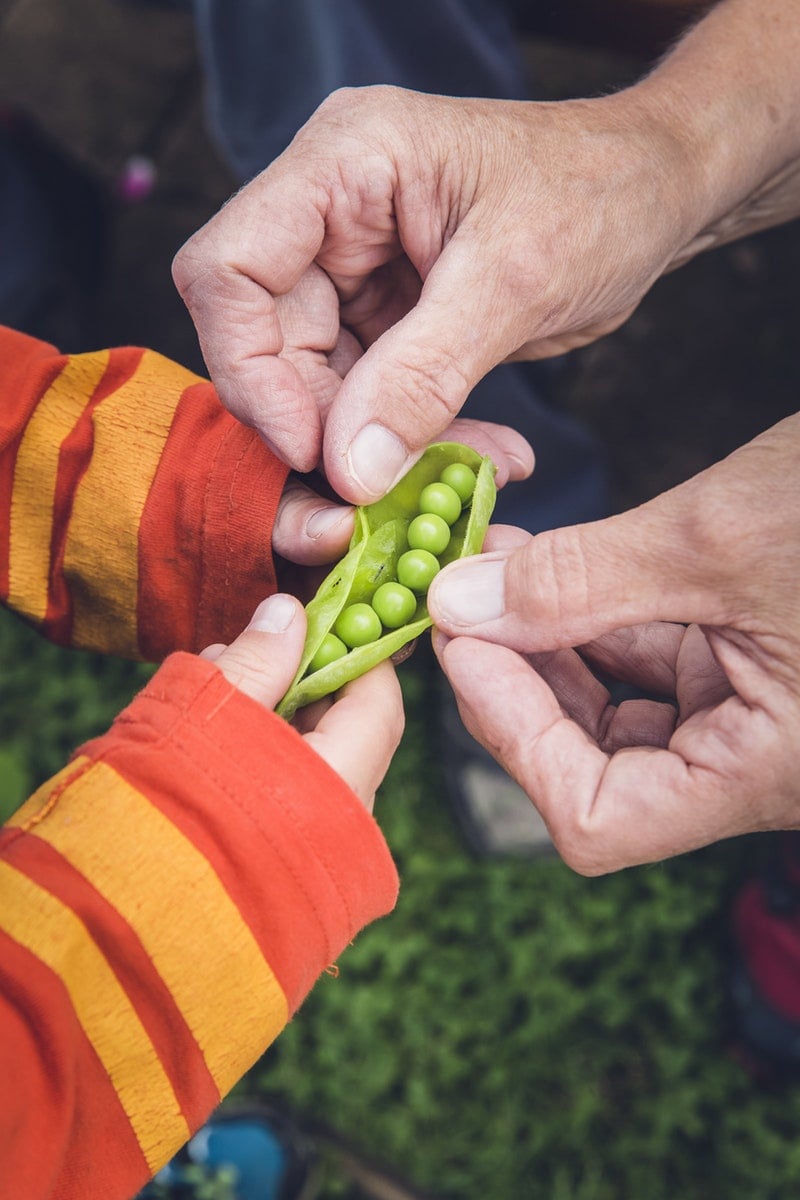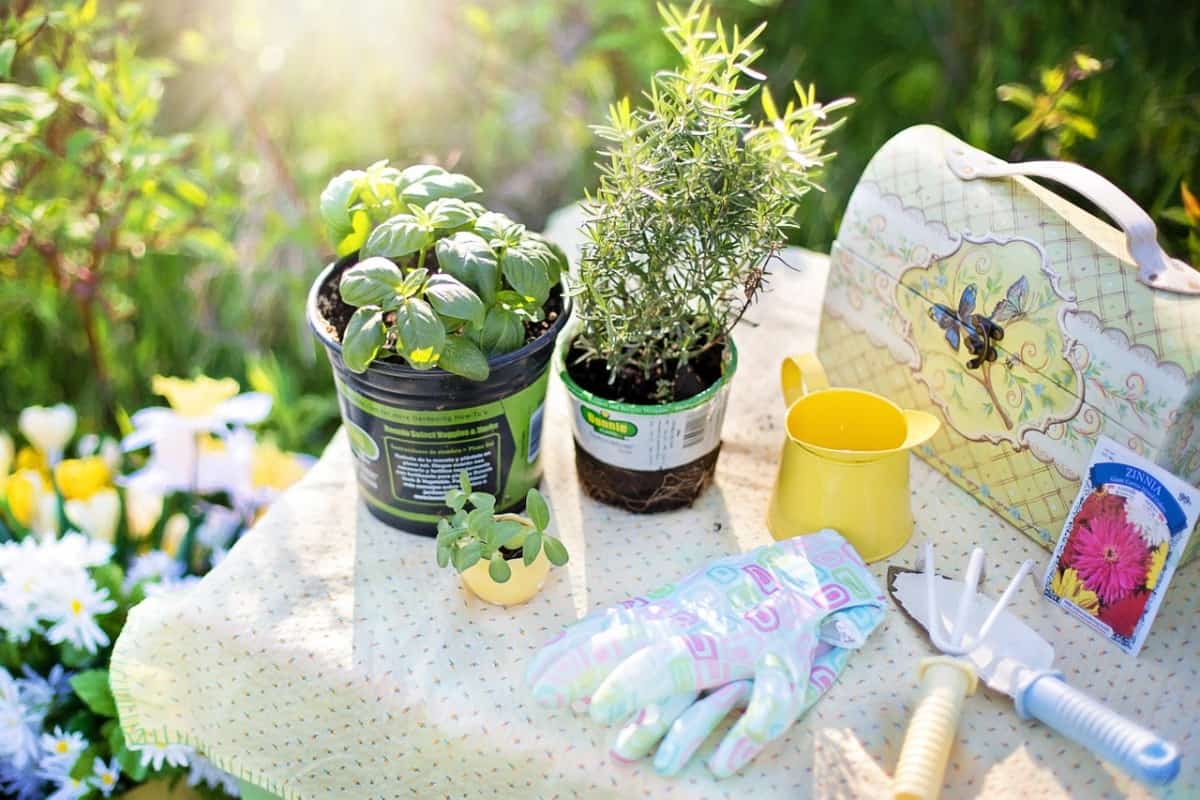Picture a produce department that is custom designed to fit your family’s dietary needs which happens to be conveniently located right outside of your home. If you are thinking about planting an edible garden, imagine the benefits it can bring to your family. Edible gardens allow parents to teach children how to appreciate the beauty of growing their own food and knowing where it comes from. Walking outside in the yard with your kids sure beats finding shoes, getting said shoes on little feet, and getting the kids in the car just to drive to the grocery store for garlic. Garden time equals fun and purposeful family time.
When you decide to plant and reap the delicious harvest from your edible gardens, you and your children will feel a sense of accomplishment from the first seed sprout to savoring their works. Edible gardens teach children to choose tasty and healthy snack options while allowing moms freedom to expand upon weekly meal options. Overall, deciding to conquer an edible garden this year equates to deciding to add some fun into your family’s daily routine!
First and foremost breathe in some confidence, Mama. You can do this! On that note, you are going to want to start small. Go big or go home is not the mantra for a first-year gardener. Rather, start small and allow room for growth each year, if desired. When choosing the ideal location for your edible garden, plot for this year while planning for next year. Be sure to leave yourself room to expand.
Snapshot Edible Garden Plan:

Make sure your ideal location is in fact ideal!
It should be easily accessible to all family members (think littles, grandparents, anyone who may enjoy seeing what you all are up to out there).
Your edible gardens will need ample sunlight.
Your edible garden also requires access to rainwater and should be located near a hose or your planned main watering source. Some days you merely will not make it out to the garden. For that reason, it should be in your sight while stuck indoors so you can still monitor progress. Once your ideal location is established, it is time to decide on the perfect size for your edible garden.
Tip: Start small (no more than three to four raised garden beds).
Take into consideration which plants you will be growing. Each plant requires a certain amount of space. Plants with vines such as zucchini, pumpkins, and watermelon need a lot more space for instance than a single basil plant. Vine plants will soon overtake over an entire box! So plan accordingly.
Edible Garden Supplies
Putting up a fence is essential for keeping wildlife out of your garden. After all, it is edible to hungry critters, too. Once your ideal size is established, all you really need is a mallet, six to eight five-foot stakes, and fencing that can be purchased at your local hardware store. One stake should be on each corner of your garden. Add others depending on size and support needed to secure fencing. Make sure to lay landscaping fabric down on the entire area of your edible garden.
Tip: Purchase a thick fabric and double layer it. If not, you will have a lot of weeding to do. The fabric makes a nice soft path to walk on for everyone. Large rocks or decorative garden accessories will suffice to hold the fabric in place.
Deciding what to grow

While choosing which plants to grow, think about what your family will eat. Make sure there is something special planted for each family member. This is a great step for making the littles feel included in the process. Let them be a part of your edible garden journey, including choosing plants. Make sure to give them choices you are comfortable with.
Some plants that are super easy for children are tiny pumpkins (so fun when you can use them as Halloween decorations), cherry tomatoes (bite-sized/tiny finger sized), parsley, basil, potatoes, and lettuce.
Tip: First-year gardeners should buy plants rather than seeds. It is much easier to foster an established plant than wait for seeds to grow. (Except for lettuce and spinach- they are very easy to start as seeds). You and your littles will see immediate growth within the garden once the plants are in.
It is beneficial to talk to the workers at the garden center (or where ever you purchase your plants). They can answer any questions you may have regarding plants or soil. If you can, splurge and buy the best plants (organic). Quality is key. After all, your family will be eating what you grow. A mid-priced soil will suffice. Be sure to get a soil specifically for planting food. Allow your littles to pick out their own gardening tools, too. Along with feeling included, they will be able to dig in the soil as you tend to the plants all summer long.
Time to plant
Tip: Follow specific planting instructions for each plant (found on the insert or seed package). Place the insert in the soil next to each plant. This way you will know what is planted where and will have the necessary harvesting information when needed.

Take notice of each plant’s unique sunlight and spacing needs. Keep plants similar in size near one another to allow sunlight to reach shorter plants. For example, planting large tomato plants right beside lettuce will prevent the lettuce from receiving sunlight once the tomato plant is mature. Water your garden immediately after planting. Do not over water the plants. Allow the soil to soak in the water. You do not want puddles. This could lead to unwanted mushrooms.
Have fun and decorate your garden. Make it yours! Many stores, including pharmacies, sell garden accessories. You can find anything from farm animals to your child’s favorite characters to add to your garden decor.
Need more fun activities to do with your kids? Here are 15 Fun and Free Out of the House Activities to do with your kids.
You should check on your garden daily, especially in the beginning. As noted earlier, the location is key. You want your edible garden to be growing in a place where you can merely look out the window on a stormy day or easily access it, as desired. Fun rainy day family projects arise when you observe and draw what you see from inside (later compare perspective as you draw from within the garden). Your family can also make a garden cookbook and all write recipes or make meal plans together that are based around your crops.
Harvest Time

Before you know it, it will be time to harvest your garden! You will have the tags holding valuable information already in the soil beside each plant. A set of garden scissors should be included in your tools. Lettuce and spinach should be cut right at the base of the leaves, as it will regrow. Zucchini, squash, pumpkins, and watermelon can be cut from the vine. Twisting tomatoes, while holding them in your hand, will allow them to come off of the plant with no damage. Along with tomatoes, strawberries and blueberries tend to be super kid-friendly in regards to picking (and eating).
It is a great idea to teach your children how to properly pick the veggies and fruit. They will have instant satisfaction when they do (and also a delicious healthy snack). Little hands are also perfect for picking parsley or basil right off of the plant.
Tip: If you have a lot of parsley and basil left in the garden at the end of the season, pick it (leave as much stem as you can) and hang it upside down to dry.
The kitchen is a great place to observe the process. Once dry, have your littles help you crumble it and store in an airtight container or baggie. Add it to your spice cabinet and enjoy seasoning future meals all year long.
A favorite aspect of edible gardens is having garden snacks. Whether your family enjoys a snack immediately as they harvest or later on, everyone will learn about farming and gain a sense of appreciation for the process. If you have any questions, the garden center or store where you purchased the plants or seeds would be a great resource for you to contact.
The best part about having edible gardens is the quality it brings to your family. Quality food, as well as quality time, will be abundant all season long.

Tying your harvest into meals and daily life is so rewarding. Others may also benefit from your edible gardens. Chances are you will have an abundance of goodies to share with your family and friends or even a local family in need.
WANT TO READ MORE?
When you are ready to expand, here’s How to Build A Raised Bed Vegetable Garden.

Photo Credit: Jill Wellington | jeanpierrecokelberghs | rawpixel.com










































